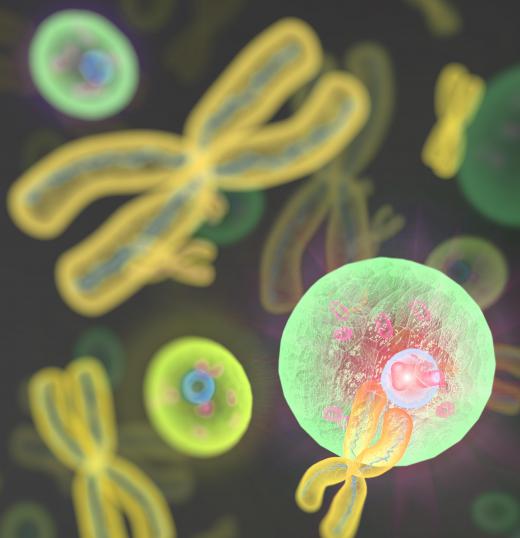What is Fibrillin?
 Mary McMahon
Mary McMahon
Fibrillin is a protein produced by the body which plays an important role in the connective tissues of the body, including muscle and cartilage. At least three types of this protein have been recognized, all of which act in slightly different ways. People who have inherited faulty fibrillin genes develop connective tissue disorders caused by inadequate amounts of fibrillin in the body, or by fibrillin which does not work as it should, depending on the nature of the genetic variations they inherit.
This glycoprotein adds elasticity and strength to connective tissue, and also plays a role in the development of the eyes, blood vessels, and skin. In the case of fibrillin-1, one of the most studied forms of this protein, the genes responsible for fibrillin production are located on the 15th chromosome, and are known as FBN1. People can order genetic testing through a DNA lab to look for variations in their FBN1 gene if they are concerned that they have a connective tissue disorder or if they are worried about passing something on to a child.

Variations on the FBN1 gene can lead to Marfan Syndrome, a connective tissue disorder which is characterized by a weakened heart and overgrowth of the long bones. Patients can also experience vascular abnormalities and vision problems. Depending on the type of variation inherited, people can experience a wide variety of symptoms caused by abnormal fibrillin production. The gene is dominant, so a child need only inherit one bad gene to develop Marfan Syndrome. Sometimes spontaneous mutations appear on a parent's 15h chromosome, leading to a less severe form of the condition.

Changes on the fibrillin-2 gene can lead to Beal's Syndrome, another type of connective tissue disorder. Historically, this condition was often confused with Marfan Syndrome because the symptoms are similar, but genetic testing revealed the genetic roots of the condition and the fact that it was in fact different.
Treatment options available for people who have unusual fibrillin genes vary. The condition cannot be cured, but it can be managed with supportive therapy, medications, and regular checkups to watch out for early signs of common complications. For example, regular eye exams can be used to identify vision changes which may indicate a need for an intervention such as surgery. People with abnormal fibrillin genes may also want to talk to a genetic counselor to discuss decisions about whether or not to have children.
AS FEATURED ON:
AS FEATURED ON:















Discussion Comments
When you get a DNA test, do you have to specify that you want them to look at fibrillin abnormalities, or is it just one of the things that's automatically checked?
Fibrillin disorders really can be terrible -- my sister has a son with Marfan syndrome, but unfortunately, it was diagnosed too late, so he ended up dying from complications at a young age.
All that to say, it really is worth having a DNA test before you give birth or decide to have a baby so that you can be prepared for the possibility of having a child with a fibrillin condition and learning to care for them, or choose not to procreate.
Post your comments